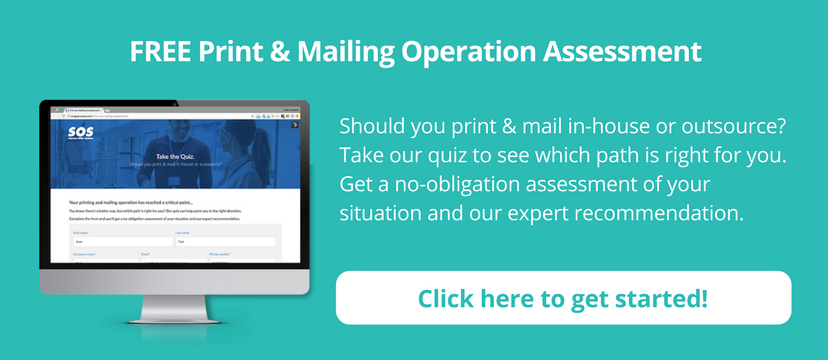Healthcare Printing: How to Ensure Privacy & Reduce Costs
Healthcare printing presents many challenges for hospitals and other large healthcare organizations, including meeting privacy and security regulations and controlling expenses. But what about the smaller healthcare organizations, such as medical practices, clinics, physical therapy and rehab centers, nursing homes and more?
These smaller healthcare facilities must comply with the same HIPAA regulations. Yet, in many cases, they’re trying to do that with minimal IT support. That makes secure, confidential and cost-effective healthcare printing an even bigger challenge.
Smaller healthcare practices often risk the confidentiality of patient records without even realizing it. And, their healthcare printing costs are spiraling out of control.
Does this sound like you? Keep reading to learn where the risks are, and how to take back control with smart healthcare printing solutions and best practices.
3 ways you’re risking patient privacy with poor healthcare printing practices
In spite of the rise of electronic health records (EHRs), many healthcare practices still rely heavily on paper documents. Under the Health Information Technology for Economical and Clinical Health (HITECH) Act, healthcare providers are required to adopt EHRs. Yet, according to managed service provider Logicalis, the new requirements actually increased printing by an average of 11 percent. Printing is not going away, and smaller practices need to prioritize securing their printing behaviors and technology.
Here are some common healthcare printing practices that compromise patient health information.
1. Leaving documents on the printer.
In a busy medical practice with shared printers, people get interrupted and leave their printed patient information sitting on the printer. Even when you trust your employees, this is a dangerous practice. There are patients, families, sales reps, delivery people, and maintenance staff in your office every day. There’s no telling where a misplaced document could end up.
2. Storing patient data on printer hard drives.
There are plenty of multifunction printers (MFPs) that automatically store print jobs on a hard drive. Even if you are using a pin printing security system (where users enter a pin before printing a document and again to pick it up) the document is still stored on the printer. You could have years’ worth of patient information on your printers just waiting to be hacked.
3. Relying on policies and employee training.
If you think your patient data is safe because you have trained your employees on secure healthcare printing practices, think again!
According to a study reported in Becker’s Hospital Review , more than half of employees said they don’t always abide by their company’s IT security policies and sometimes print, copy or scan confidential information.
We’re not saying you shouldn’t have security policies and employee training! But you also need the right technology to enforce secure healthcare printing policies.
Best practices for improving healthcare printing security
Implement secure pull printing.
In one easy step, you can put a stop to abandoned documents on the printer and make it easier for people to pick up their printed documents. Secure print tracks every printed document by giving every user a code or printer card. After sending a print job, employees must enter the code or swipe their card at the printer to release the job and pick it up. No more forgetting to pick up that confidential patient document!
Adding pull printing makes things even more convenient, because your staff no longer have to send print jobs to a specific device. Print jobs stay in a cloud-based print queue, and people can pick them up at the closest printer.
Learn more:
Pull Printing: a Solution for Modern Workplaces
Guide to Secure Document Printing
Control user access to printer functions.
Did you know you can control who can access, print, scan, copy and fax important patient records such as lab requests, reports and charts? Canon, the industry leader for multifunction printers, provides this capability through its uniFLOW print management software. If you’ve already got modern Canon printers, you might already have what you need to set up more secure healthcare printing access.
Don’t forget to secure document scanning and faxing.
It’s not only healthcare printing that leads to breaches in patient confidentiality. Your employees are also using your printers to copy, scan and fax the same records. The good news is, Canon provides features that control security of these functions as well. For example:
- Configure MFPs to send incoming faxes to a password-protected network folder or email.
- Automatically generate HL7 CDA records from scanned patient documents and send them directly to a secure EHR system.
- Set up one-touch buttons that perform repetitive tasks automatically, such as faxing lab requests, to eliminate manual errors.
Clear patient data from hard drives.
While it’s ideal to use cloud-based print queues to avoid having data stored on printer hard drives, you can also secure and clear hard drive data with Canon’s HDD Data Erase Kit, HDD Data Encryption Kit and HDD Password Lock.
GOOD TO KNOW: Did you ever think about what happens to your printer hard drive (and any stored information) after the device is removed from your office? That’s an overlooked healthcare printing security risk. That’s why Superior Office Systems offers hard drive destruction to our clients when replacing printing equipment.
Healthcare printing costs impact your bottom line
Did you know that by securing your healthcare printing, you can also improve your bottom line? Here’s how.
Get Meaningful Use incentives.
As part of the 2009 HITECH Act, the government provides financial incentives (up to $44,000 or $63,750 depending on the program you choose) to healthcare providers who adopt secure electronic health records systems that show “meaningful use” of patient EHRs to positively impact patient care. And if you don’t follow the Meaningful Use program guidelines, you may receive less than 100 percent of the Medicare fee schedule for your services.
Prevent costly fines.
Just one breach of patient confidentiality can cost a healthcare facility between $10,000 and $1,000,000! That can be a disaster for a small practice.
Reduce print expenses.
By implementing secure print and other healthcare managed print services, you cut down on wasted printing, which reduces costs for paper, ink, toner, and even service costs. You can also reduce costly color printing and route jobs to cost-effective printers by setting up print routing.
Learn more:
Managed Print Saves Thousands on Office Print: A Case Study
Rules-Based Print Routing: The Easy Way to Cut Office Print Costs




